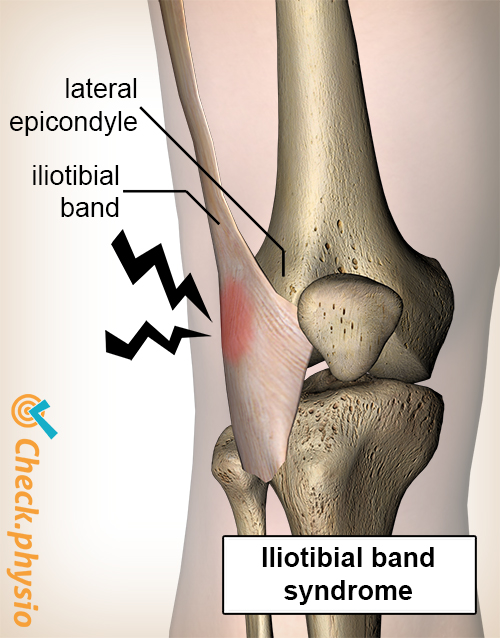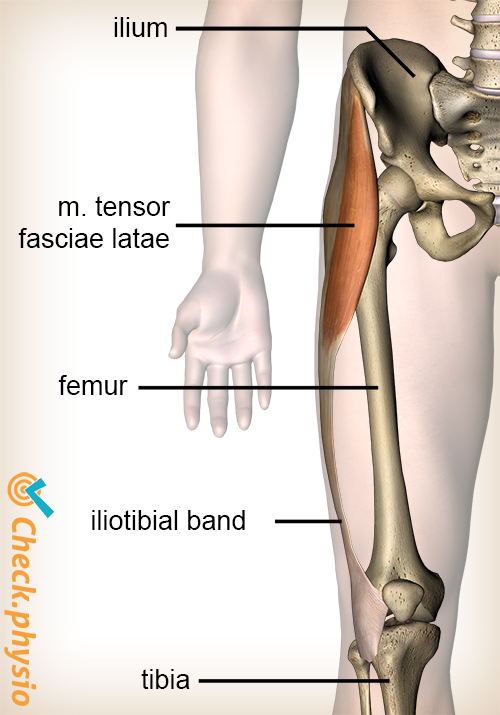- Conditions
- Iliotibial band syndrome
Iliotibial band syndrome Runner's knee
Introduction
Iliotibial band syndrome is a running injury that also occurs occasionally with mountain hikers. The pain is located on the outside of the knee and is caused by friction between the iliotibial tendon and the bone tissue of the knee joint.
In the literature, iliotibial band syndrome is also referred to as "runner's knee". However, this name is confusing as the term is also frequently used for the patellofemoral pain syndrome.

Description of condition
The iliotibial band is a strong band of connective tissue (fascia) located on the outer side of the thigh. It runs all the way from the pelvis to the side of the knee. When flexing and extending the knee (for example when running), the tendon moves across a bony prominence on the outside of the knee. This bony prominence is called the "lateral epicondyle" of the femur (thigh bone).
Between the tendon and the bony prominence, there is a type of smooth fatty tissue that allows the structures to move over each other without too much friction. If there is friction, this can irritate the fatty tissue. Each time the iliotibial tendon moves over the irritated fatty tissue, this causes symptoms of pain on the outside of the knee. The irritation can penetrate into the bone tissue.
Cause and history
The symptoms are usually caused by long distance running or mountain hiking (especially descents). There are a number of factors that contribute to iliotibial band syndrome developing:
- Poor running technique (for example, rotating the knee inward when running).
- Bow legs.
- Shoes with support that is too high on the inside of the foot.
- Always running on the same side of a tilting road (this forces the leg on the outside into a bowed position).
- A lateral epicondyle of the thigh that is very pointed or sticks out.
Signs & symptoms
The symptoms develop gradually. The pain is felt on the outside of the knee, during or immediately after running (or mountain walking). There are no problems when at rest.
Diagnosis
The diagnosis is made by physical examination and the patient's story. Ultrasound examination or an MRI scan should be considered only when the symptoms are not clear.
Treatment and recovery
During the first three weeks it is important to rest the tendon, the irritated fatty tissue and the bone. This can be done quite simply by not running or walking in mountains during this period.
In the meantime, we recommend starting exercises to strengthen the muscles hip and knee muscles. Specific stretching exercises may also make the iliotibial band less tense.
The contributing factors - which probably caused the symptoms to occur - must be removed before the running training can be resumed gradually. For example, an adjustment in running technique or wearing other (better) shoes.
In occasional cases, you may consider surgical elongation of the iliotibial band. This reduces the tension on the tendon and so reduces friction while running.
Exercises
There are several exercises you can do to reduce the symptoms caused by the iliotibial band friction syndrome. View here the exercise program of exercises for iliotibial band syndrome.
More info
You can check your symptoms using the online physiotherapy check or make an appointment with a physiotherapy practice in your locality.
References
Nugteren, K. van & Winkel, D. (2008) Onderzoek en behandeling van de knie Houten: Bohn Stafleu van Loghum.

